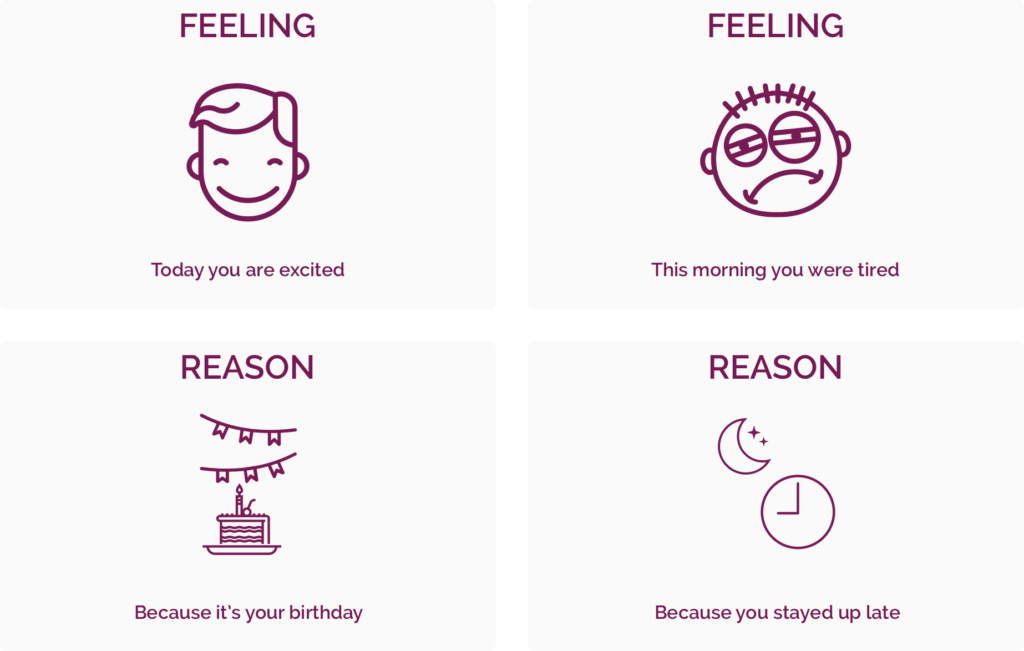Having a vocabulary of emotions whether it be by vocalising or using pictures/symbols, can help your child to manage their feelings rather than you having to manage their behaviour. We often only teach the basic emotions that we hope can keep the situation manageable eg happy, sad, tired, angry, thirsty hungry. There is so much more language that we can teach our children and teenagers to explain and manage how they are feeling eg. bored, brave, calm, cheerful, confused, curious, disappointed, embarrassed, excited, fantastic, fearful, frustrated, ignored, impatient, important, jealous, lonely, loving, overwhelmed, peaceful, proud, shy, safe, surprised, tense.

Discussion points to help identify these emotions
- Discuss these feelings, how they felt and how they were managed
- Acknowledge your child/teen when they try to label their emotions
- Give your child/teen support and encouragement to talk about their emotions
- Use your own emotions as a learning opportunity by sharing these with your child